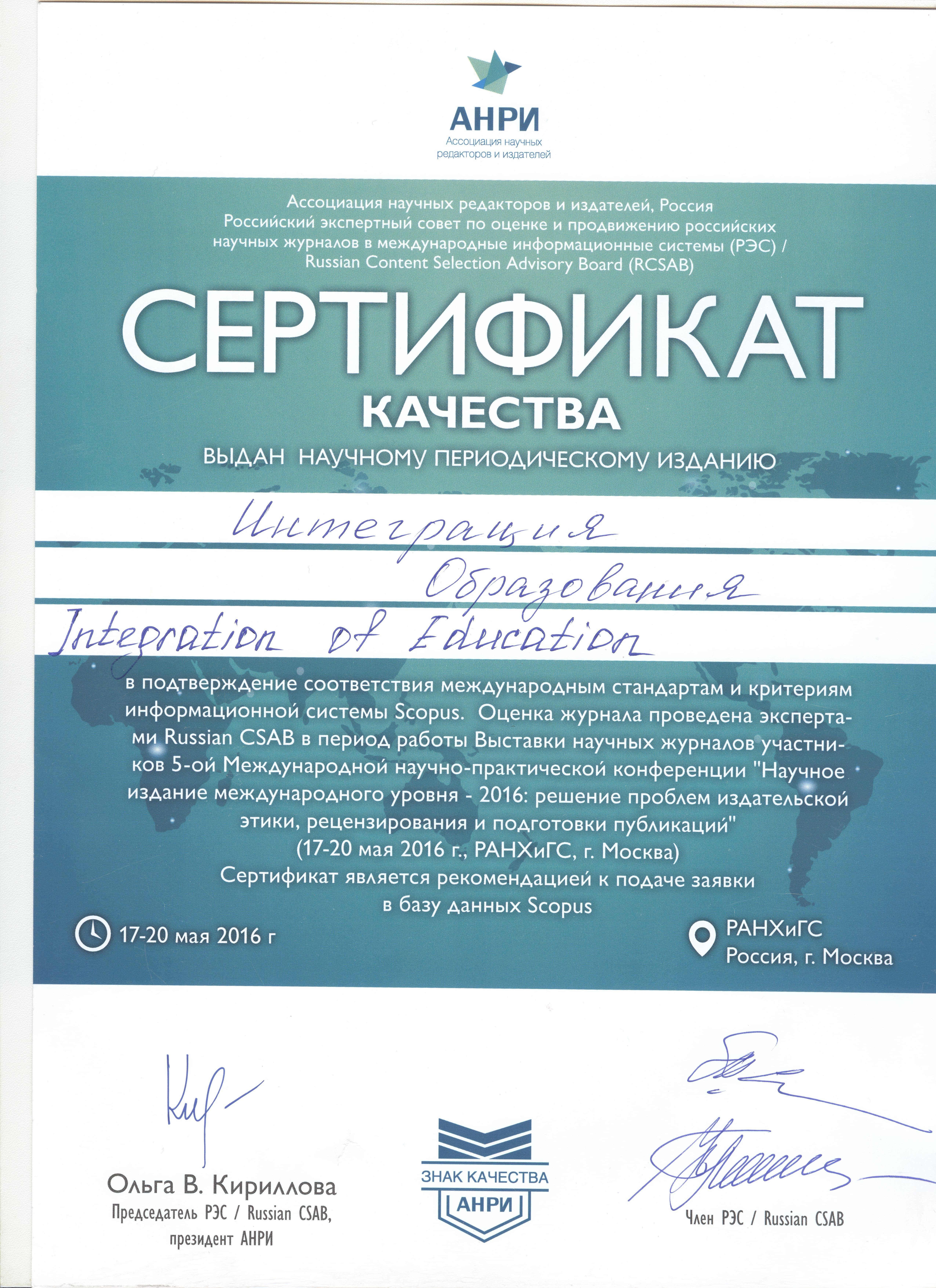UDK 377:316.77-056.264
DOI: 10.15507/1991-9468.103.025.202102.340-358
Close Gap Test Strategies for Students with Severe Speech Impairment
Olga E. Gribova
Chief Researcher, Institute of Special Education of the Russian Academy of Education (8 bd. 1 Pogodinskaya St., Moscow 119121, Russian Federation), Ph.D. (Ped.), ORCID: https://orcid.org/0000-0002-6289-4703, This email address is being protected from spambots. You need JavaScript enabled to view it.
Anna A. Almazova
Director of the Institute of Childhood, Head of the Speech Therapy Сhair, Moscow Pedagogical State University (88 Prospekt Vernadskogo, Moscow 119571, Russian Federation), Dr.Sci. (Ped.), ORCID: https://orcid.org/0000-0002-7042-6037, Scopus ID: 57201726878, This email address is being protected from spambots. You need JavaScript enabled to view it.
Introduction. The level of formedness of text competence at secondary school in the aspect of understanding the text’s factual information ensures the successful grasping of the learning content. The purpose of the research was to identify the specifics of the functioning of linear deployment mechanisms and probabilistic forecasting among learners of 5–10th grade (form) with specific language impairment.
Материалы и методы. The modified close gap test method was used as the main research method at the level of the ascertaining experiment. The results of the close gap tests, filled by learners, were exposed to quantitative and qualitative analysis. The research was conducted by applying theoretical (interpretive) and empirical (ascertaining experiment based on author’s method) methods. The analytical stage involved the use of the method of correlation analysis, the mathematical processing was carried out with the help of one-way analysis of variance (ANOVA).
Results. Analysis of experimental data helped determine the close gap test strategies in adolescent students with specific language impairment. The qualitative and quantitative analysis of studentsʼ work was applied to determine three main groups of strategies for linear deployment and probabilistic forecasting: strategies for establishing semantic links at the level of the lexical component, a strategy for establishing links at the level of associations, and no strategy. Furthermore, the analysis of substitutes with regard to their compliance with grammatical requirements revealed the following typology of manifestations of agrammatism: the use of an inadequate part of speech, deficiencies of grammatical presentation in phrases, non-compliance of the grammatical form of the substitute with the requirements for the grammatical design of the sentence. Correlation analysis was applied to establish links between different types of close gap test strategies used by adolescents with specific language impairment, as well as their relationship with the levels of understanding the factual content of the text.
Discussion and Conclusion. The results obtained contribute to the development of developmental psycholinguistics, special pedagogy, speech therapy and school methods of speech development.
Keywords: severe speech and language disorders, specific language impairment, adolescents, close test, gap filling strategies, text understanding mechanisms, linear deployment, probabilistic forecasting
Acknowledgments: The authors would like to thank the principals of special-needs schools for children with severe speech and language disorders in Moscow and Vladimir Tatyana Koroleva and Irina Velikanova and the teachers of these schools for their help in collecting materials. The authors should like to pay tribute to the memory of late Galina Vasilievna Chirkina for in-depth analysis and valuable comments during the research.
The authors declare no conflict of interest.
For citation: Gribova O.E., Almazova A.A. Close Gap Test Strategies for Students with Severe Speech Impairment. Integratsiya obrazovaniya = Integration of Education. 2021; 25(2):340-358. DOI: https://doi.org/10.15507/1991-9468.103.025.202102.340-358
Contribution of the authors:
O. E. Gribova – development of methodology and analysis of research findings; writing the draft.
A. A. Almazova – conducting critical analysis of materials; preparation of the final wording of the text.
All authors have read and approved the final manuscript.
Submitted 15.12.2020; approved after reviewing 02.02.2021;
accepted for publication 16.02.2021.

This work is licensed under a Creative Commons Attribution 4.0 License.





























